Throughout this site there are many discussions of economic indicators. This post is the latest in a series of posts indicating facets of U.S. economic weakness or a notably low growth rate.
The level and trend of economic growth is especially notable at this time. As seen in various estimates, the probability of recession has grown significantly.
As seen in the October 2022 Wall Street Journal Economic Forecast Survey the consensus (average estimate) among various economists is for .22% GDP in 2022, .44% GDP in 2023, 1.82% GDP in 2024, and 2.12% GDP in 2025.
Charts Indicating U.S. Economic Weakness
Below is a small sampling of charts that depict weak growth or contraction, and a brief comment for each:
The Yield Curve (T10Y2Y)
Many people believe that the Yield Curve is a leading economic indicator for the United States economy.
On March 1, 2010, I wrote a post on the issue, titled “The Yield Curve As A Leading Economic Indicator.”
While I continue to have the stated reservations regarding the “Yield Curve” as an indicator, I do believe that it should be monitored.
The U.S. Yield Curve (one proxy seen below) is negative and is (all things considered) notably very low when viewed from a long-term perspective. Below is the spread between the 10-Year Treasury Constant Maturity and the 2-Year Treasury Constant Maturity from June 1976 through the January 9, 2023 update, showing a value of -.66% [10-Year Treasury Yield (FRED DGS10) of 3.55% as of the January 9 update, 2-Year Treasury Yield (FRED DGS2) of 4.24% as of the January 9 update]:
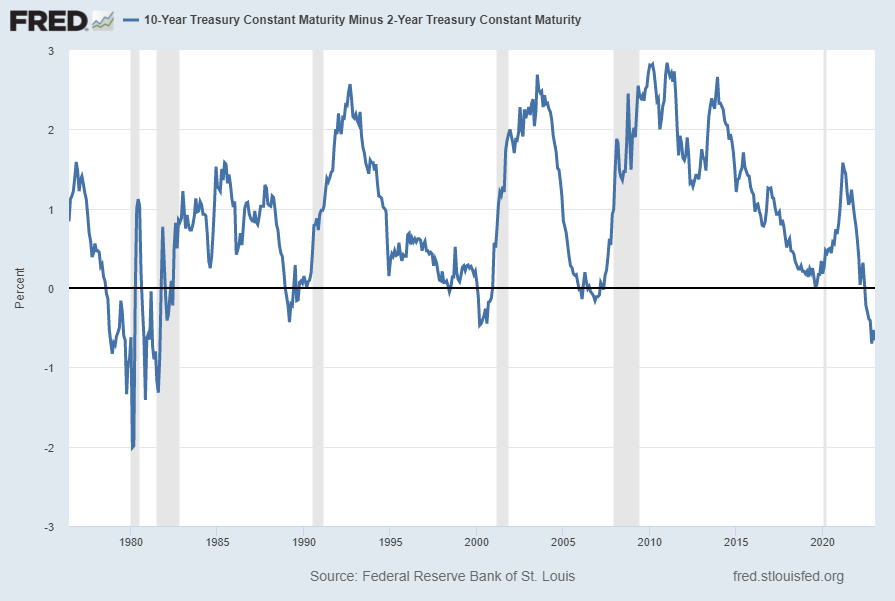
source: Federal Reserve Bank of St. Louis, 10-Year Treasury Constant Maturity Minus 2-Year Treasury Constant Maturity [T10Y2Y], retrieved from FRED, Federal Reserve Bank of St. Louis; accessed January 10, 2022: https://fred.stlouisfed.org/series/T10Y2Y
__
Average Weekly Overtime Hours Of All Employees, Manufacturing [CES3000000004]
Various U.S. manufacturing measures continue to indicate growth. However, overtime hours for manufacturing is somewhat subdued by recent-era economic expansion standards. The Average Weekly Overtime Hours of All Employees, Manufacturing measure is currently at 2.9 hours as of the January 6, 2023 update:
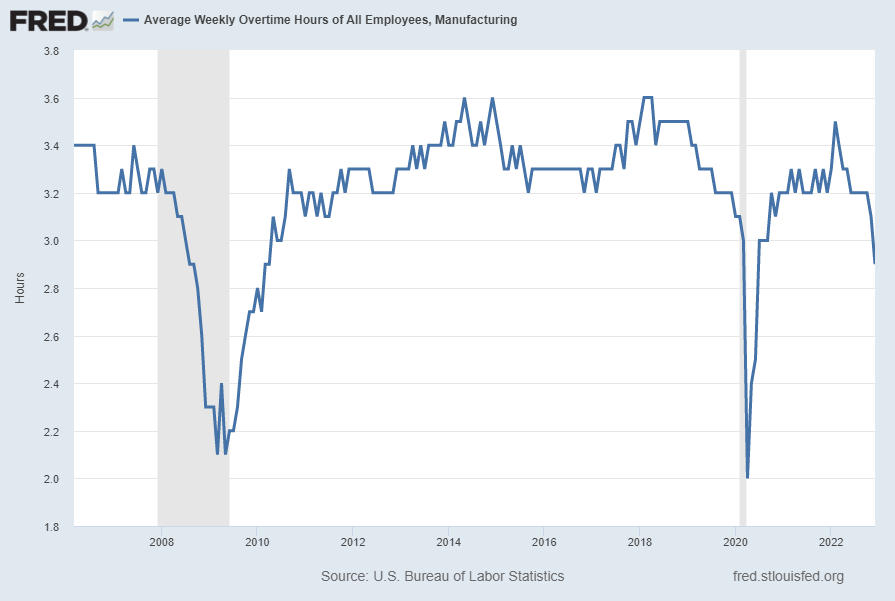
Shown below is this same measure on a “Percent Change From Year Ago” basis with value of -9.4%:
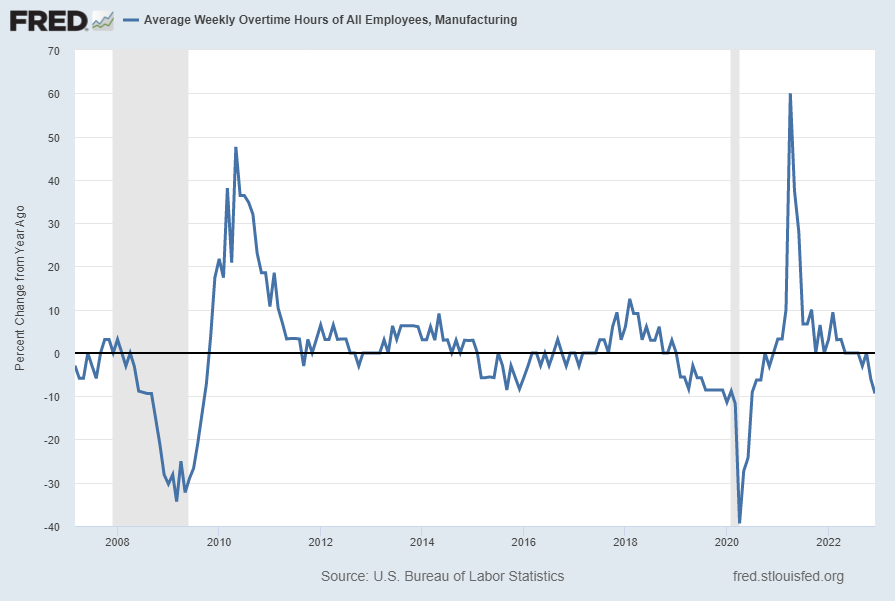
source: U.S. Bureau of Labor Statistics, Average Weekly Overtime Hours of All Employees, Manufacturing [CES3000000004], retrieved from FRED, Federal Reserve Bank of St. Louis; accessed January 9, 2023: https://fred.stlouisfed.org/series/CES3000000004
__
Real Average Hourly Earnings
Various measures of (nominal) average hourly earnings continue to show significant growth. However, due to continuing high inflation, Real Average Hourly Earnings continues to decline. Shown below is a chart of earnings measures as seen in The Economics Daily of December 19, 2022 titled “Real average hourly earnings down 1.9 percent from November 2021 to November 2022”:
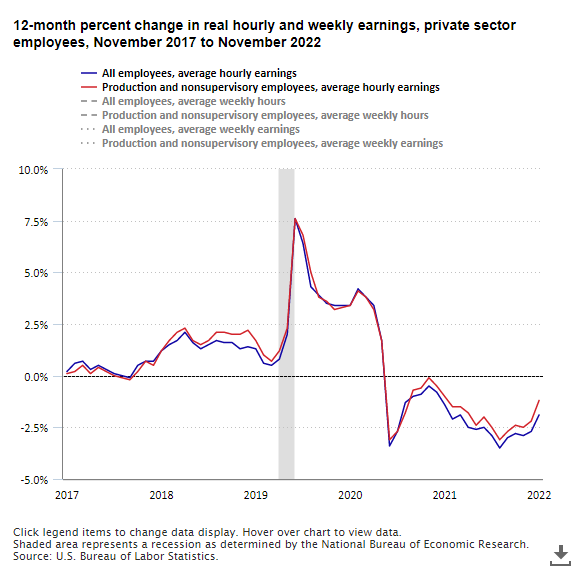
source: Bureau of Labor Statistics, U.S. Department of Labor, The Economics Daily, Real average hourly earnings down 1.9 percent from November 2021 to November 2022 at https://www.bls.gov/opub/ted/2022/real-average-hourly-earnings-down-1-9-percent-from-november-2021-to-november-2022.htm (visited January 09, 2023).
__
Real Personal Income Excluding Current Transfer Receipts [W875RX1]
Various measures of real personal income continue to be under pressure. Below is Real Personal Income Excluding Current Transfer Receipts with last value of $14,598.2 Billion SAAR through November) last updated December 23, 2022:
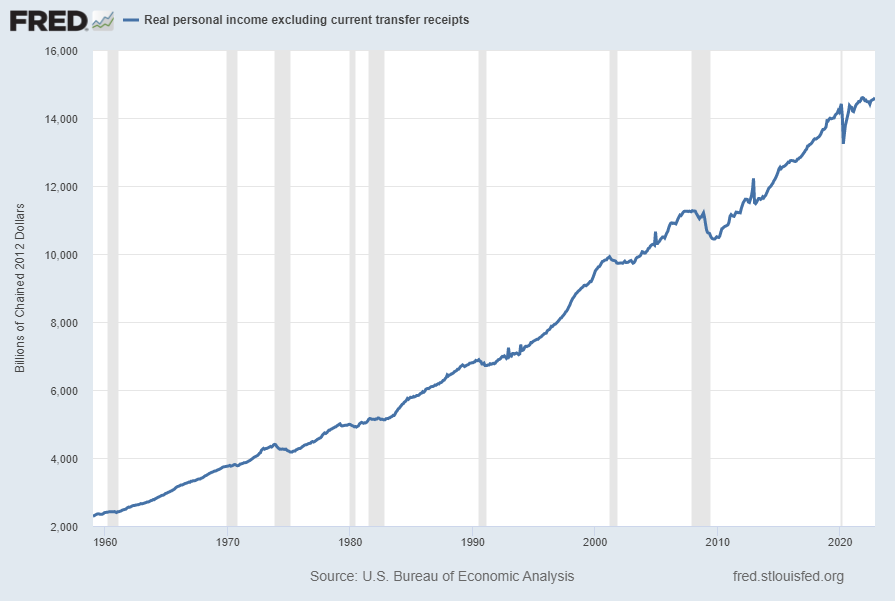
Below is this measure displayed on a “Percent Change From Year Ago” basis with value 0.0%:
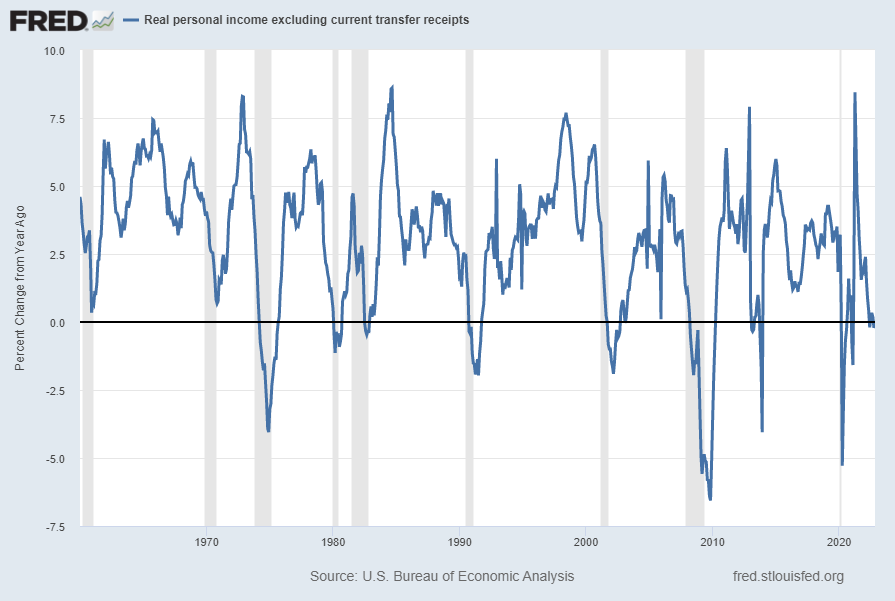
source: U.S. Bureau of Economic Analysis, Real personal income excluding current transfer receipts [W875RX1], retrieved from FRED, Federal Reserve Bank of St. Louis; accessed January 9, 2023: https://fred.stlouisfed.org/series/W875RX1
__
Other Indicators
As mentioned previously, many other indicators discussed on this site indicate weak economic growth or economic contraction, if not outright (gravely) problematical economic conditions.
_____
The Special Note summarizes my overall thoughts about our economic situation
SPX at 3900.40 as this post is written
No comments:
Post a Comment